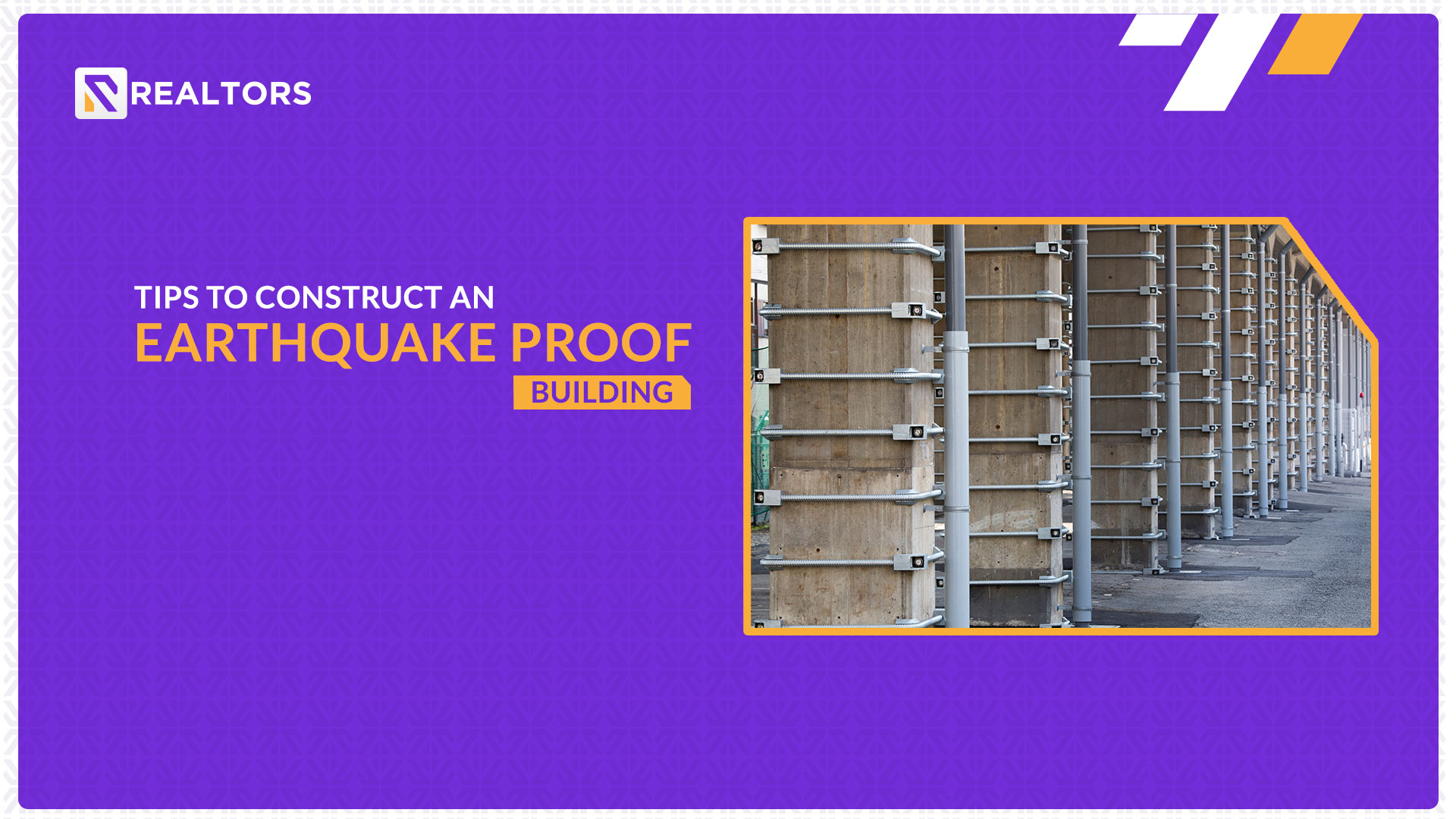Despite the latest technological advances, natural calamities are unpredictable. Natural catastrophes pose a grave threat as they can cause massive destruction, including damage to buildings and loss of life. Earthquakes, in particular, are characterized by tremors due to the seismic activity of tectonic plates, which can have devastating consequences. To evade any undesired effects, building earthquake-resistant buildings is crucial.
While traditional construction methods are still operative, architects, construction companies, and other stakeholders involved in the construction business must prioritize sustainable building practices to ensure that structures can withstand natural disasters.
Table of Content
- Lay a Stable Foundation
- Use Earthquake-Resistant Materials
- Strengthen Walls and Roofs
- Install Seismic Dampers
- Seek Professional Guidance
5 Tips to Construct Earthquake Proof Building
Keeping up your safety in mind, Realtorspk will discuss five tips to help you construct an earthquake-proof building.
1.Lay a Stable Foundation
The first and foremost thing is the foundation, the backbone of a building. The foundation is critical to the overall stability of a building, especially during earthquakes. A weak foundation can cause a building to collapse, even during a minor tremor. Before construction begins, thorough research must be conducted to ensure the land is stable and can support the building’s foundation.
The foundation should be built using high-quality materials. This can involve building the structure on pads that separate it from the ground or using a solid foundation slab with an intermediate cushion of sand to keep the building’s base away from the soil, making it more resistant to seismic forces.
2. Use Earthquake-Resistant Materials
The type of materials used during construction can significantly impact a building’s ability to withstand an earthquake. Materials with high ductility absorb large amounts of energy without breaking. Therefore, the construction materials like reinforced steel, concrete, and timber can improve a building’s strength and resistance to tremors. Also read our blog a guide to construction tools.
Reinforced steel can help absorb shock waves during an earthquake, while concrete can help prevent buildings from collapsing. Additionally, timber can add flexibility to a building’s structure, enabling it to bend and absorb the energy from seismic shockwaves.
3. Strengthen Walls and Roofs
During an earthquake, walls and roofs are often subjected to the immense pressure that can cause them to collapse. Strengthening walls and roofs can significantly improve a building’s resistance to tremors. This can be done through shear walls, braced frames, diaphragms, or seismic-resistant frames, which redirect seismic forces by moving lateral forces to vertical-resistant parts of the building.
Additionally, using lightweight materials for roofing can help reduce the overall weight of the building, which can keep the roof from collapsing during an earthquake. Shorter buildings require more structural reinforcement than taller buildings.
4. Install Seismic Dampers
Seismic dampers can help absorb the energy from an earthquake, preventing it from damaging the building’s structure. These devices use hydraulic or mechanical mechanisms to dissipate energy, reducing the impact of the tremors. Installing seismic dampers can significantly improve a building’s overall resilience to earthquakes. They can range from gas-driven shock isolation systems to fluidics-based systems and come in various sizes to handle different force levels.
5. Seek Professional Guidance
Designing and constructing an earthquake-proof building requires specialized knowledge and expertise. It is compulsory to seek the guidance of professionals with experience in designing and building structures that can withstand natural disasters. Architects, engineers, and construction companies can offer valuable insights and advice on the best practices for constructing an earthquake-proof building.
Conclusion
In a nutshell, building earthquake-proof structures is essential, especially in earthquake-prone areas. By following these five tips, architects, construction companies, and other stakeholders involved in building structures can ensure that buildings are resilient to tremors and can withstand the forces of nature. Building earthquake-proof structures are not only a smart investment in safety, but it also helps to promote sustainable building practices that are environmentally friendly and contribute to a better future for all.









